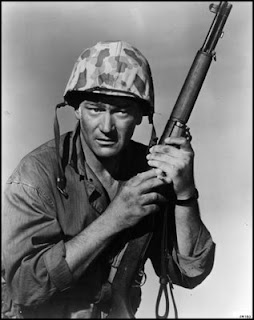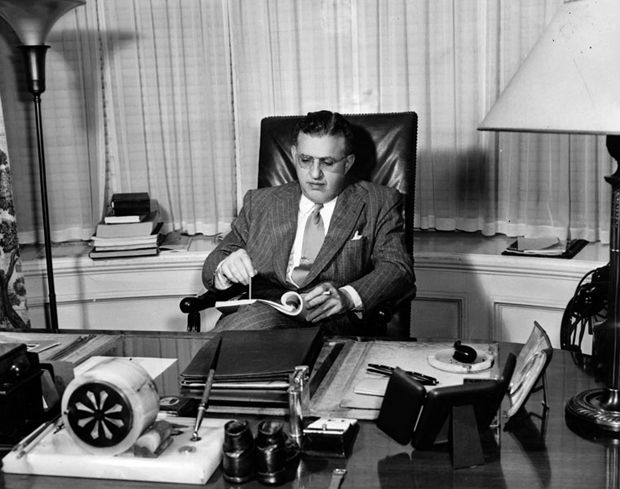 |
| Robert Montgomery, Clark Gable, and Robert Taylor |
When World War II struck the world, everyone reacted in different ways. Some tried to ignore it. Some couldn't ignore it. For everyone it changed their lives and careers. This is evident especially in Hollywood, that dream machine that seemed untouchable by the problems of the outside world. They rolled in wealth while the rest of the country starved. They were able to ignore what the average American could not. Their everyday life was completely different than that of the common man, at least, it appeared to be on the surface. But when the Axis Powers began to take over the world, the Stars of Hollywood and the common man came together for a common cause. They were being threatened the same as the rest of the world. The question is though, HOW did they react?
The British actors wanted to rush home to England. The German actors wanted to become American citizens. The Jews wanted to pretend they weren't Jewish. The Americans either wanted to stay out of it or wanted the country to wake up and fight this evil before it reached American soil.
 |
| Major Frank Capra - source |
David O. Selznick worried that his British stars Vivien Leigh and Leslie Howard would leave in the middle of filming Gone With the Wind. Alfred Hitchcock worried not only about his family back in England but also that he would lose Laurence Olivier and George Sanders, as well as Joan Fontaine before Rebecca was finished. Arsenic and Old Lace had to be wrapped up in a hurry so that director Frank Capra could report for duty. Those who were overseas making movies finished them quickly and came home. The Bogart/Astor/Greenstreet film, Across the Pacific, meant to capitalize on the success of The Maltese Falcon, was scrapped because it's subject material, thwarting a Japanese attack on Pearl Harbor, hit too close to home. "It was a creepy feeling," said Mary Astor, "to have been talking about the 'plans of the Japanese' in the picture and then have them practically blueprint our script"(A Life on Film. Mary Astor). On the lighter side, RKO didn't have to worry about air strikes as they "hadn't had a hit for years" (When the Stars Went to War: Hollywood and World War Two. Roy Hoopes. 1994. 77).
Once the Japanese attacked Pearl Harbor, however, America did not have a choice. They went to war. And what did the Stars do?
They Served Their Country
James Stewart was turned down at first because he was too skinny. So, he gained weight and made it by one ounce. He turned down the usual celebrity jobs of making training films or selling bonds and became a fighter pilot. He flew twenty combat missions and worked up to the rank of Colonel. He was highly decorated but never bragged about it. He was just doing his part like any other American.
Fear of mistake was stronger than fear of my personal safety.
David Niven rushed home to England as soon as they declared war on Germany. He tried to enlist in the RAF (Royal Air Force) but was rejected. He joined the army and became a lieutenant in the rifle brigade. Later he was assigned to a motor training battalion. He also took part in the Normandy invasion, commanding a special reconnaissance unit called "The Phantom." He was awarded the Legion of Merit.
Clark Gable enlisted as a private in the Army Air Corps after the death of his wife, Carole Lombard (more on her below). He was sent to officer candidate school in Miami. After he graduated, his first assignment was to shoot a film about aerial gunners(which was sadly never used). He flew some missions also but everyone was afraid he had a death wish and was awarded and Air Medal and sent home.
Soon we will wear the uniforms of officers. How we look in them is not very important. How we wear them is a lot more important.
Henry Fonda enlisted in the Navy and went to the Marshall Islands, where he got his first real taste of the war. He even manned a battle station a few times. He spent most of his time in the navigation room plotting Japanese sub positions. He received a presidential citation and a Bronze Star.
This is my country and I want to be where it's happening. I don't want to be in a fake war in a studio or on location. I'm not crazy about the idea of getting hurt, but I want to be on a real ocean, not the back lot. I want to be with real sailors, not extras.
Robert Montgomery joined the Navy and commanded PT boats in the Panama Canal and in the South Pacific. He was made a lieutenant commander (and came down with malaria). Later he became a deck officer on the USS Barton and received the Bronze Star for taking part in the Normandy Invasion. His first picture after the war was They Were Expendable.
You can read about many more actors who served overseas (some hadn't become actors yet) here.
They Served on the Home Front
The Hollywood Canteen was started by Bette Davis and John Garfield (he couldn't join the army because of a heart murmur). Their purpose was to entertain and feed the troops home on leave who were too far away from home. The stars jobs were to entertain, serve food, wash dishes, and dance or talk with the boys and men who came through. They even made a movie about it! The film ha an impressive list of stars (some of which are seen below).
Jack Carson, Jane Wyman, John Garfield, & Bette Davis
The USO Show was a way to bring the entertainment to the troops, whether it be the training camps across the country or near the front line across the ocean. The most famous entertainer of USO Shows was none other than Bob Hope.
Bob Hope giving the troops something to laugh about.
Other stars who performed tirelessly were ones who were too old to fight or had health problems that prevented them from active duty. Edward G. Robinson went to Normandy shortly after D-Day where he became Little Caesar for the troops. James Cagney went as his character George M. Cohan, a "song-and-dance man." Bing Crosby sang to the troops. The song most in demand: "White Christmas," which, according its composer, Irving Berlin "took on a meaning I never intended. It became a peace song." Remember the scene in White Christmas (1954)? Fred Astaire danced, Red Skelton did skits, Jack Benny joked. And as it says in another song from White Christmas: "Jolson, Hope, and Benny all for free!" (from the song "There's a lot to be said for the Army").
The woman did their part too (see Pin-ups below).
Danny Kaye and John Garfield signing autographs for the troops.
Myrna Loy was very active. Here she is in her Red Cross Uniform.
Hattie McDaniel in her uniform.
Betty Grable, the most famous pin-up
Jane Russell standing next to a fighter plane with her picture on it.
Marlene Dietrich, who was practically in the army. She was on Hitler's death list.
Rita Hayworth was also a popular pin-up. She did more than pose for the war though.
Paulette Goddard, Dorothy Lamour, and Veronica Lake
They Served on the Screen
John Wayne wasn't able to serve in the war due to an old injury and the fact that he was married with four children. But to everyone who went to the movies (which was a lot), it appeared that John Wayne won the war single handed. Think of Flying Tigers, The Fighting Seabees, and Back to Bataan.
John Wayne turned World War II into the greatest gunfight of them all. ~ Henry Fonda
Humphrey Bogart, who was 43, also made several war movies: the classic Casablanca, Across the Pacific, Passage to Marseille, and To Have or Have Not.
Greer Garson was Mrs. Miniver and inspired more patriotism than any other film made during the war. Winston Churchill said it was "worth one hundred battleships." A story about a mother who keeps her family together during the trying time of the Blitz, it was the perfect message for the time. The sermon that is preached at the end of the film was even printed up into pamphlets and dropped over German-occupied countries. President Roosevelt said the film was "significant in establishing in America the ideas of self-sacrifice and of coming to the aid of England."
They Gave Their Lives
Carole Lombard was the first star casualty of the war. In January of 1942, a little over a month after Pearl Harbor, she had just finished up the first and very successful big bond tour (she sold two million dollars worth of bonds in one day). She then boarded a plane to head back to Hollywood and her husband, Clark Gable. Sadly, her plane crashed into a mountain, killing everyone aboard, which included Lombard's mother and fifteen army men. Gable was devastated and followed Carole's last words to him, "Pappy, you'd better get in this man's army."
Leslie Howard (Ashley Wilkes in Gone With the Wind) also died in a plane crash. In 1943 his plane was shot down by German Fighters over the Bay of Biscay. He was on his way from Lisbon (where he was involved in intelligence-gathering activities) to England. He was 50 years old.
This post (which I know leaves out a lot of stars) is part of the Classic Movie History Project Blogathon. Be sure and check out each days entries. You'll learn a lot!
Sources:
When the Stars Went to War: Hollywood and World War Two. Roy Hoopes. 1994.
Pinterest (images)

















































